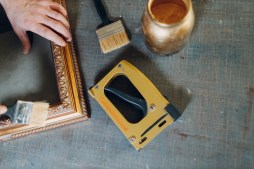Expert Advice: How to Create Unique and Personalized Jewelry

Are you tired of wearing the same mass-produced jewelry as everyone else? Do you want to express your individuality through your accessories? Creating your own jewelry is the perfect solution. Not only does it allow you to unleash your creativity, but it also gives you the opportunity to wear unique pieces that reflect your personal style. If you’re ready to embark on this exciting journey, here are some expert tips on how to create your own jewelry.
Gathering Inspiration
Before diving into the world of jewelry making, it’s important to gather inspiration. Look for ideas everywhere – in nature, fashion magazines, or even online platforms like Pinterest. Pay attention to different styles, materials, and techniques that catch your eye. By exploring various sources of inspiration, you can develop a clear vision for the type of jewelry you want to create.
Once you have a general idea, start creating a mood board or a digital collage with images and colors that resonate with you. This will serve as a visual guide throughout your creative process. Additionally, consider visiting local art galleries or attending craft fairs where you can see handmade jewelry up close and get inspired by other artists’ work.
Choosing Materials and Tools
The next step in creating personalized jewelry is selecting the right materials and tools. Depending on your design preferences and budget, there are various options available.
For beginners, working with beads is an excellent choice as they come in countless shapes, sizes, colors, and materials. Beads can be easily incorporated into necklaces, bracelets, earrings, or even statement rings. You can find beads made from glass, wood, metal, gemstones – the possibilities are endless.
In addition to beads, consider investing in basic tools such as pliers (round-nose pliers for creating loops and wire cutters for cutting metal), wire (for making jump rings or wire-wrapped designs), and findings (clasps, earring hooks, etc.) to complete your jewelry pieces.
Learning Techniques
To bring your jewelry designs to life, it’s important to learn various techniques. Start with the basics such as stringing beads onto wire or thread and creating simple loops. As you gain confidence, explore more advanced techniques like wire wrapping or bead weaving.
There are numerous resources available for learning jewelry-making techniques. You can enroll in local workshops or classes, watch online tutorials on platforms like YouTube, or even join online communities where you can connect with like-minded individuals and learn from their experiences.
Remember that practice makes perfect. Don’t be discouraged if your first attempts aren’t flawless. Keep experimenting and refining your skills until you achieve the desired results.
Adding Personal Touches
The beauty of creating your own jewelry lies in the ability to add personal touches that make each piece truly unique. Consider incorporating elements that hold special meaning to you – birthstones, charms representing significant events or people in your life, or even repurposing sentimental items into new pieces of jewelry.
Experiment with different color combinations, textures, and patterns to create one-of-a-kind designs. You can also add personalized details by engraving initials or names onto metal components or using specific symbols that hold personal significance.
Remember that creating personalized jewelry is a continuous journey of self-expression. Embrace the process and enjoy the freedom of designing pieces that reflect your individuality.
In conclusion, creating your own jewelry allows you to break free from mass-produced accessories and express your unique style. By gathering inspiration, choosing materials and tools wisely, learning various techniques, and adding personal touches, you can create stunning pieces that reflect your personality and make a statement wherever you go. So why wait? Start exploring the world of jewelry making today.
This text was generated using a large language model, and select text has been reviewed and moderated for purposes such as readability.





